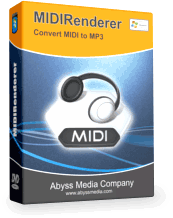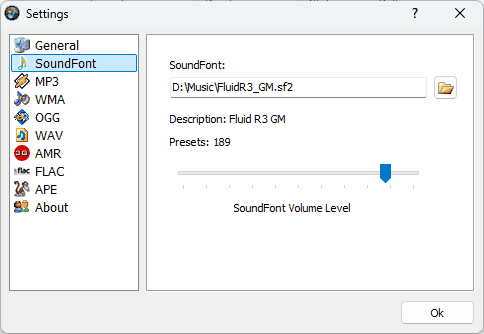
If you didn't already know, MIDI files, unlike other audio formats, do not contain digitized audio. Not in any form at all. Most of all, they are similar to a musical score, which indicates which instrument should play at a given time. These files are easy to edit and take up very little space, but they are not capable of containing vocals. At best, they can contain synchronized lyrics, this version of the files has a KAR extension and, as you may have guessed, is intended for use in Karaoke. But if the file only contains notes, then who plays them? How to convert it to the usual MP3 format, which is supported by any audio player? It is this question that we will consider in this article.
1 What's the rationale for converting MIDI to MP3?
Let's start with the fact that any player reads digitized sound from an audio file and converts it into an analog signal using a DAC. Notes do not participate in this chain in any way. Therefore, it is impossible to play MIDI in a regular player. On computers and gadgets, it is possible to install an extension or switch to another player, but in the case of hardware players, the verdict is final. The solution to the problem may be to convert MIDI to MP3 or another format that is native to your system. Fans of Apple products will most likely prefer AAC.
Windows has a built-in MIDI synthesizer - Microsoft GS Wavetable synth. It allows you to double-click on a MIDI file, open it in some audio player, and hear how the file is interpreted as sound. But it has a fatal flaw - it sounds terrible. Is it an oboe or a bassoon? It is impossible to distinguish. Even worse, in recent versions of Windows it is virtually impossible to change the default synth in an easy way.
So problems arise on computers too. A MIDI file that sounded great in a notation editor suddenly starts sounding like 8-bit sound on an Atari. In my opinion, the reasons listed are quite enough to think about converting MIDI into something more suitable.
2 What conversion options are available?
Only its author can fully reproduce music from a MIDI file as intended. Another person will have to install the same Digital Audio Workstation with the set of required VST instruments. This can be quite expensive, and the manual will take up more than one page of text. Therefore, this option is not even considered.
About ten years ago, I would have proposed a simple and free solution, accessible to everyone - the file is played in a suitable player and the sound is recorded with an audio recorder. However, here we are again faced with the terrible sound of the standard Windows synthesizer. The maximum that you will achieve in this way is the opportunity to evaluate the melody itself. And this is not the fastest conversion method.
There is a third method that allows you to kill two birds with one stone. Using a separate synthesizer with support for sound fonts ensures high sound quality and conversion speed increases by an order of magnitude. It is this kind of synthesizer that is built into the MIDIRenderer, which will be discussed further.

What makes MIDIRenderer so great?
- High quality polyphonic synthesizer
- Support for soundfonts in SF2 format
- High conversion speed and batch processing
- Post-processing with reverb and chorus effects
3 MIDI conversion guidelines
This MIDI file converter is very similar to the usual audio converters, so we will not once again list all the steps with downloading and installation, but will immediately discuss some of the nuances that need to be taken into account.
Perhaps the most important point will be replacing the standard sound font with a better one. The size of the installer does not allow you to include a full set of MIDI XG in the program package, so you can download it separately by selecting one of the options here.

Don't rush to convert MIDI files right away, but first use the built-in player to evaluate the sound. You may have to try several sound fonts before you get the desired result.
The quality of the sound font itself is largely determined by its size. The larger and better the samples, the larger the file size. Even with compression, a good sound font can take up hundreds of megabytes.
4 Bottom line
So, we have discussed what affects the sound quality of MIDI files. This may be useful to you even if you did not intend to convert them to MP3. As for the recording options themselves, you can combine them, for example, using a player with support for sound fonts together with a recorder. This option may be slow, but it will be free.
